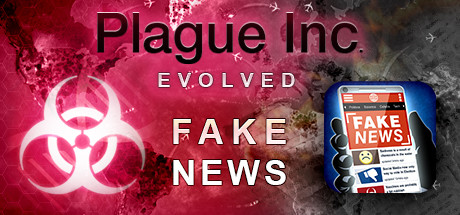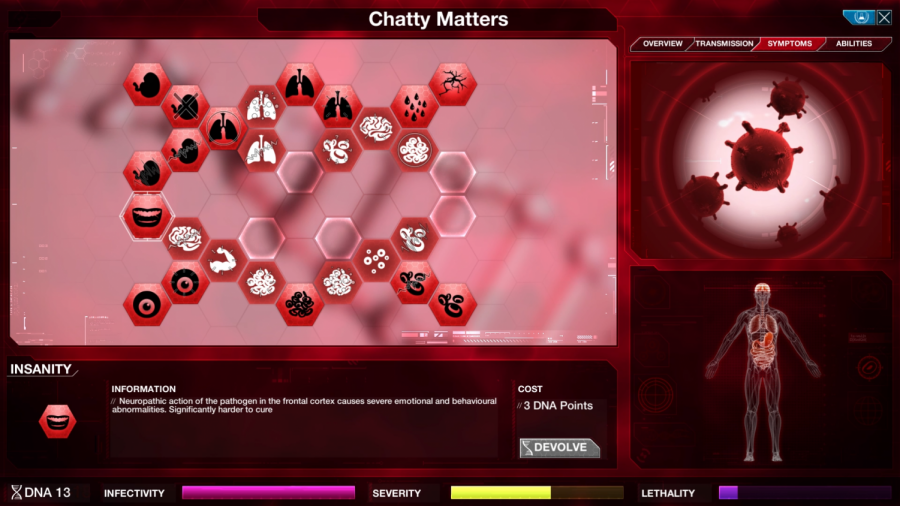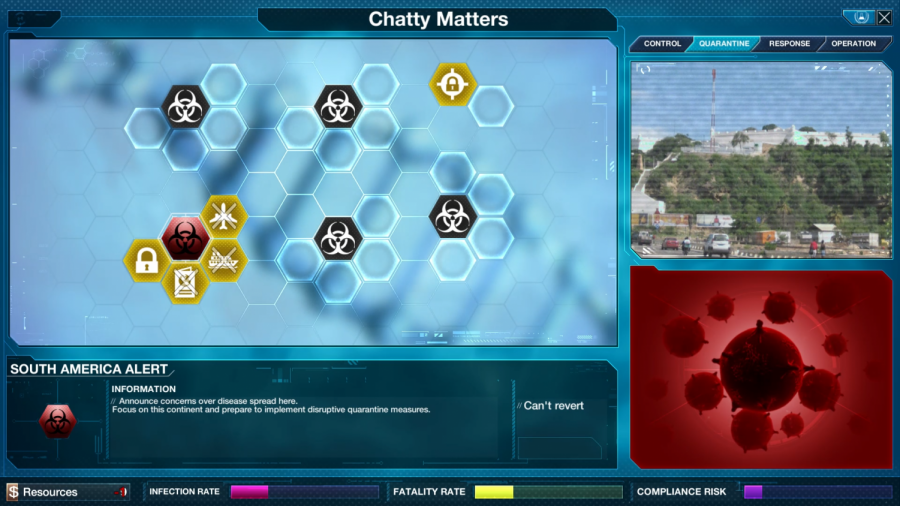Finding the Cure with Plague Inc.

April 8, 2021
Does anybody remember Plague Inc., perchance? You know, that mobile game that had you control a disease in an attempt to eradicate humanity? It came out all the way back in 2012, and aside from a small abundance of expansions and port of the game for PC called Plague Inc. Evolved, the game’s popularity has certainly dwindled. That is, except for an expansion that was only just recently released called “The Cure.”
As the name implies, “The Cure” expansion puts players in control of the people trying to stop a potentially world-ending disease. With how the real world has recently dealt with the virus-that-shall-not-be-named, this new expansion got me thinking: how well could I handle such a rampant disease? With the help of Plague Inc., that’s exactly what I tried to find out.
The primary aim of this experiment was to see what methodology tended to work best as and against the disease. Taking into account the fact that this game/simulator hybrid grabbed the attention of the CDC as a tool for educating the public, the general strokes of those strategies can act as a representation of what to watch out for in an actual pandemic.
First, I took control of a virus in an attempt to infect the world. Right away, one thing became readily apparent: the disease’s infectivity (i.e. how fast the disease can spread) was just as, if not more dangerous, than the disease’s ability to kill. This was especially true of the disease’s ability to travel; with more transmission vectors, the disease started to spread at an exponential rate.
By the time the disease had caught the attention of the virtual humans, however, this balance started to change. At that point, the disease’s symptoms became a primary concern. With an ever-increasing number of symptoms, not to mention the ever-increasing severity of said symptoms, the humans had to mount their response: research into a cure.
If I’m lucky, the humans only notice my disease when almost everyone worldwide is infected. In that case, I can evolve more severe symptoms and they won’t have time to realize what happened. If I’m a bit less than lucky, though, the humans will catch on before I’ve managed to spread my disease across the world. Isolated areas, such as Greenland and Madagascar, become the main concern at this point – if they close their borders, it’ll be a miracle if the disease manages to reach them. Then it’s a race against the clock, and my disease will either win it all or be eradicated at the halfway mark.
After eradicating humanity with a virus, I decided to try protecting them from a virus for a different perspective. With less experience in “The Cure,” it took some time for me to understand how to stop a virus dead in its tracks. I got there, though. Eventually.
The early stages of “The Cure” quickly establish the necessity of multitasking. In the first place, the disease needs to be found. By that point, it’s already infected several thousand people and several countries. Then the focus turns to keeping the spread under control while simultaneously minimizing casualties among those who were already infected. After a brief period of time, the mid-game sets in with new processes that need attention.
With the disease’s inevitable spread, the mid-game becomes a serious task of micromanaging multiple new issues that, if they are not taken care of, can evolve into major problems spanning across entire countries. Quarantines are one of these options. While they are effective in regards to reducing the disease’s spread, they will also raise a country’s non-compliance. With enough non-compliance… well, I don’t think I need to explain much of anything there. Non-compliance can be reduced with various operations, though this is only to an extent, and care must be taken to ensure that the people acknowledge your decisions. There’s also the matter of vaccines with the stages of research, development, and deployment. All of these stages must be completed one by one alongside the other myriad of tasks in order to truly eradicate the disease.
Then the game reaches its final stages. Most countries are usually infected by this point, and millions of people may already be dead. The focus turns to reducing casualties and ensuring that the vaccine is properly completed, since reducing the spread becomes a difficult task with minimal returns. By this point, the end result is usually clear. Either the disease has taken too much of the population and the vaccine has taken too long to be completed, or the population is prepared enough and manages to deploy the vaccine, eradicating the disease permanently.
Ultimately, the methodology in playing as both the disease and the cure comes down to being quick, decisive, and efficient. Having a foothold of any kind is necessary for the disease to spread. On the other hand, the cure has to ensure that the disease is incapable of gaining any kind of foothold. If either process takes too long, the other side gains an almost insurmountable advantage.
At the end of the day, Plague Inc. is only a simulator. It can’t hope to account for all of the factors that real life throws into play. On the other hand, the game’s broad strokes of information and overall accuracy make for a fascinating take on the topic of pathology. If there’s one thing I can most certainly take away from my experiences with Plague Inc., it would be that, should a disease manage to decimate most of the population, Greenland will be our only hope. Try playing the game for yourself and you’ll see what I mean.








